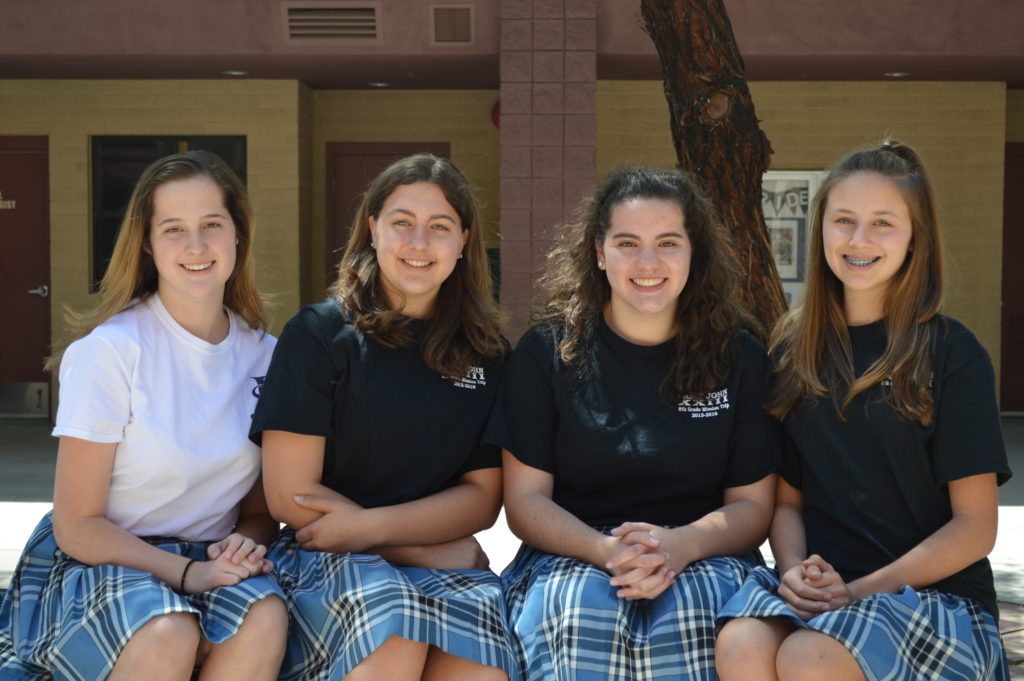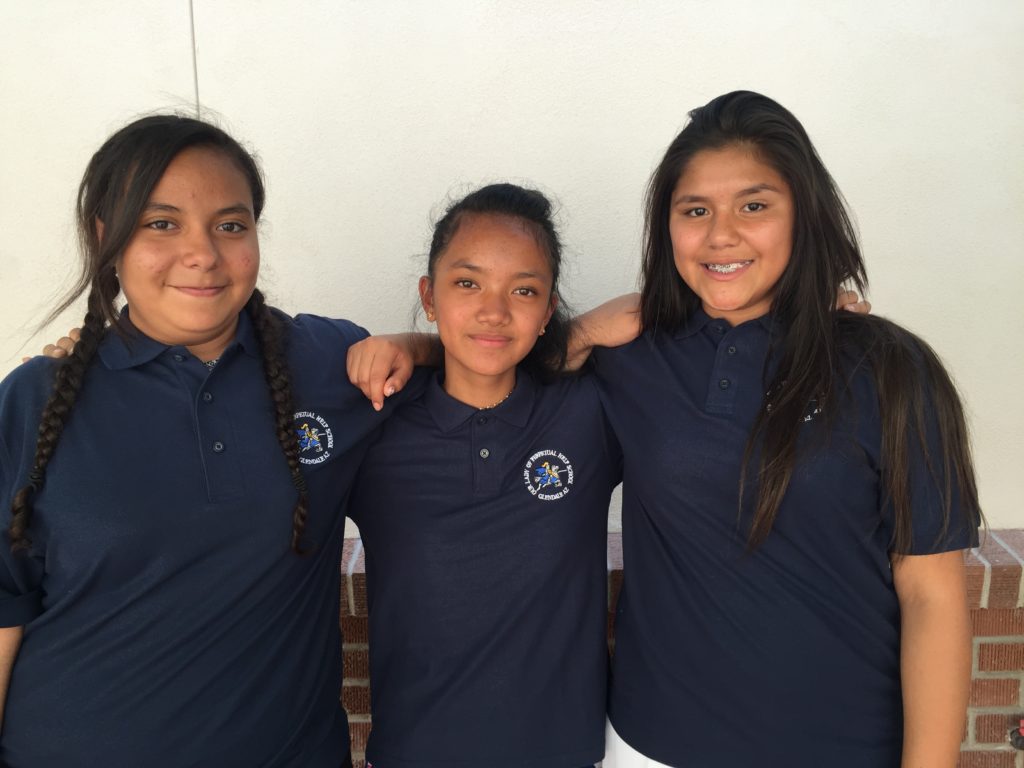
Virtual connections and discoveries are a norm for today’s junior high crowd. They embrace the opportunity.
So it should be no surprise that an eCYBERMISSION — essentially a science fair in cyberspace — attracted teams from nearly every state plus U.S. territories and some U.S. military schools abroad. They accepted a mission challenge in one of seven categories such as alternative energy, food, national security or robotics then researched a local related problem and proposed a solution.
Judges recently named the top two teams per grade level in the state competition. A team from St. John XXIII in Scottsdale and Our Lady of Perpetual Help in Glendale ruled the eighth-grade division.
St. John eighth-graders Bianca Angeles, Sarah Bentzin, Paige Gehringer and Nicolette Sciortino each earned $1,000 in savings bond money for their project. It involved genetic re-engineering of plant life to create a glow-in-the-dark “night light” plant.
The U.S. Army and the Army Educational Outreach Program sponsored the competition. Its aim is to help citizens remain globally competitive in the fields of science, technology, engineering and mathematics.


This was OLPH’s rookie year for the competition with Glendale students using scientific inquiry to test whether it’s more beneficial to replace white sugar with organic evaporated cane sugar. The team, consisting of Crystal Balanon, Eva Perry and Angela Alvarado, earned second place. Each student earned $500 in U.S. savings bonds.
A second St. John team — who named themselves after Pope John VI — reportedly earned honorable mention for its “PowerWalk,” a shoe that recharged a phone battery with every step. Scottsdale schools, both public and private, dominated the sixth- and seventh-grade categories.
High school freshmen could also compete although there weren’t any finalists from Arizona. The eCYBERMISSION has drawn in more than 100,000 students since its inception in 2002. National judging will take place June 20-24.






